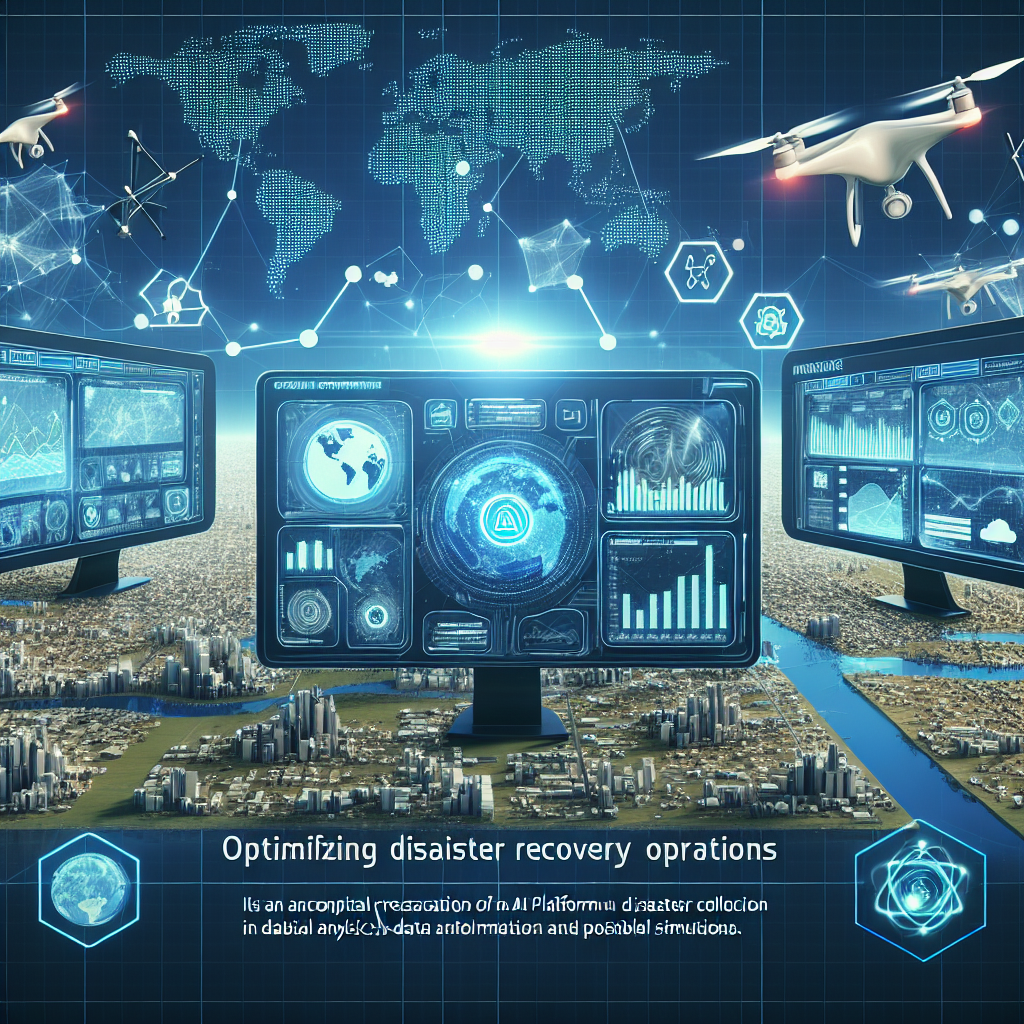Introduction
Disasters can strike at any time, causing widespread destruction and devastation. From natural disasters like hurricanes, earthquakes, and wildfires to man-made disasters such as terrorist attacks and industrial accidents, the impact on communities can be profound. In the aftermath of a disaster, effective and efficient recovery efforts are essential to help affected areas rebuild and recover.
One technology that has the potential to revolutionize disaster recovery efforts is artificial intelligence (AI). AI platforms have the ability to process vast amounts of data quickly and accurately, enabling response teams to make informed decisions in real-time. In this article, we will explore the potential of AI platforms in disaster recovery and how they can be utilized to improve response and recovery efforts.
AI Platforms in Disaster Recovery
AI platforms can be used in a variety of ways to enhance disaster recovery efforts. One of the key benefits of AI is its ability to process and analyze large amounts of data quickly and accurately. This can be particularly useful in the immediate aftermath of a disaster when response teams are working against the clock to assess the situation and prioritize their efforts.
For example, AI platforms can be used to analyze satellite imagery to assess the extent of damage caused by a natural disaster. This information can help response teams identify areas that require immediate assistance and allocate resources accordingly. AI can also be used to analyze social media posts and other online sources to gather real-time information about the disaster and its impact on the affected population.
In addition to data analysis, AI platforms can also be used to optimize logistics and resource allocation during the recovery phase. For example, AI algorithms can help response teams determine the most efficient routes for delivering aid and supplies to affected areas. This can help reduce response times and ensure that resources are distributed where they are needed most.
Furthermore, AI can be used to predict future disasters and assess risk factors in order to better prepare for future events. By analyzing historical data and trends, AI platforms can help identify areas that are at high risk of disasters and develop strategies to mitigate these risks. This can help communities become more resilient and better prepared to respond to future disasters.
Challenges and Limitations
While AI platforms hold great promise for improving disaster recovery efforts, there are also some challenges and limitations that need to be addressed. One of the main challenges is the need for accurate and reliable data. AI algorithms are only as good as the data they are trained on, so it is essential to ensure that the data used is up-to-date and of high quality. In some cases, data may be limited or incomplete, which can affect the accuracy of AI predictions and analysis.
Another challenge is the potential for bias in AI algorithms. AI systems are only as objective as the data they are trained on, and if the data contains biases or inaccuracies, this can affect the accuracy of the AI platform. It is important for developers to be aware of these biases and take steps to mitigate them in order to ensure that the AI platform is fair and unbiased.
Furthermore, AI platforms can be expensive to develop and implement, which may be a barrier for some organizations, particularly in developing countries. It is important to consider the cost-effectiveness of AI platforms and ensure that they provide value for money in order to justify the investment.
Finally, there are also ethical considerations to take into account when using AI in disaster recovery efforts. For example, there may be concerns about privacy and data security when using AI to analyze personal data or social media posts. It is important to ensure that data is handled responsibly and in accordance with privacy regulations in order to protect the rights and privacy of affected individuals.
FAQs
Q: How can AI platforms be used to improve disaster response efforts?
A: AI platforms can be used to process and analyze large amounts of data quickly and accurately, enabling response teams to make informed decisions in real-time. This can help identify areas that require immediate assistance and prioritize resources effectively.
Q: What are some of the challenges of using AI in disaster recovery efforts?
A: Some of the challenges include the need for accurate and reliable data, the potential for bias in AI algorithms, the cost of developing and implementing AI platforms, and ethical considerations around privacy and data security.
Q: How can organizations ensure that AI platforms are fair and unbiased?
A: Organizations can ensure that AI platforms are fair and unbiased by being aware of potential biases in the data and taking steps to mitigate them. This may involve using diverse datasets, testing for biases, and implementing algorithms that are transparent and explainable.
Q: What are some ways that AI platforms can be used to predict future disasters?
A: AI platforms can be used to analyze historical data and trends to identify areas that are at high risk of disasters. By predicting future disasters and assessing risk factors, communities can develop strategies to mitigate these risks and become more resilient.
Conclusion
AI platforms have the potential to revolutionize disaster recovery efforts by providing real-time data analysis, optimizing logistics and resource allocation, predicting future disasters, and assessing risk factors. While there are challenges and limitations to using AI in disaster recovery efforts, with careful planning and consideration, AI platforms can be a valuable tool for improving response and recovery efforts in the face of disasters. By harnessing the power of AI, response teams can be better prepared, more efficient, and more effective in their efforts to help communities rebuild and recover from the devastation of disasters.

